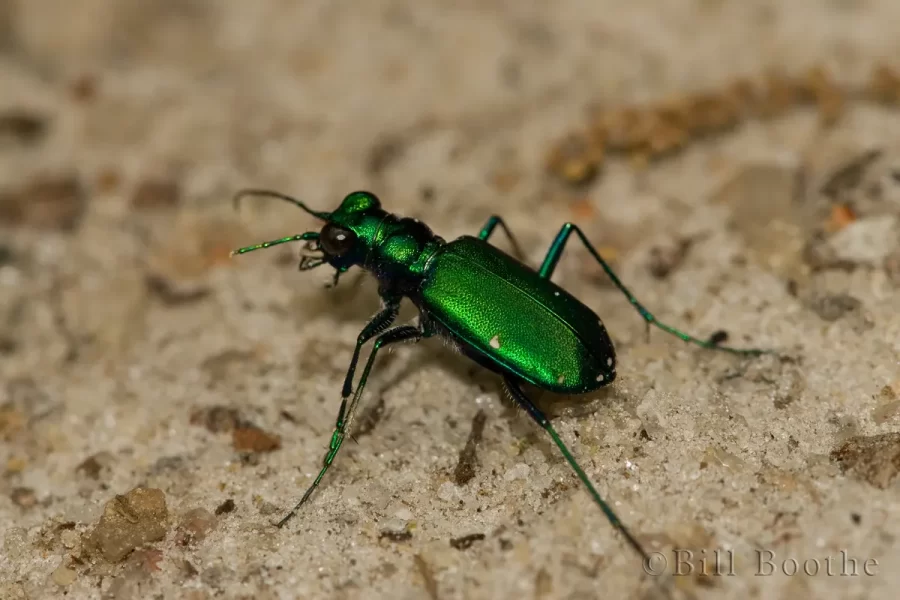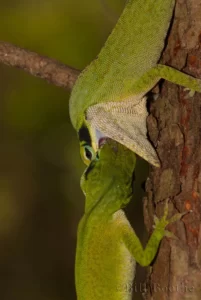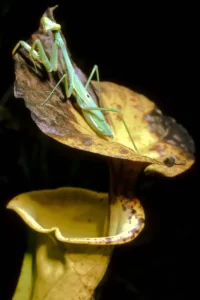My wife Marcia and I were hiking at Torreya State Park near the Apalachicola River when I saw bright glints of green in bare patches of dirt on the trail. Upon closer examination, I saw that they were Six-spotted Tiger Beetles (Cicindela sexguttata).
As always, I had my camera with me and I set out to photograph this beautiful metallic green beetle. Unfortunately for me, the beetles had no interest in posing for a portrait. On my knees, I would follow a likely beetle, prepare to focus, and then, just as I would get ready to click the shutter, the uncooperative insect would spurt off on a short flight before landing again at a distance just out of range of the lens. I would faithfully follow the beetle to its new landing site to try again. Of course, every time I almost reached the landing zone, off would go the beetle on its next flight. The flights were interspersed with short sprints as it searched for its prey which includes small insects and spiders.
This predatory behavior is not photographer-friendly! The tiger beetles were oblivious to me during the next forty-five minutes as I pursued them on my knees before finally getting an acceptable photo.
I had just discovered one of the characteristics of this tiger beetle species: touch-and-go landings. If you’re not familiar with this term, it refers to pilots who must make a certain number of takeoffs and landings to keep qualified for flying. They do this by briefly touching wheels down on the runway in their final approach and landing, and without slowing down, immediately take off again to repeat the process multiple times.
It turns out that the Six-spotted Tiger Beetle looks for motion and runs at breakneck speed toward the prey. It runs so fast that it can’t see the prey until it stops again. If the prey is within reach, the beetle grabs it with its jaws. Otherwise, the beetle will repeat the “touch-and-go” procedure until it succeeds.
The Six-spotted Tiger Beetle is found in shaded hardwood forests. It is one of Florida’s twenty-nine species and subspecies. There are 223 species and subspecies in North America. If you are interested in identifying tiger beetles, there are several field guides available. If budget permits, I suggest the paperback A Field Guide to the Tiger Beetles of the United States and Canada by David L. Pearson, C. Barry Knisley, and Charles J. Kazilek, 2006, Oxford University Press.



